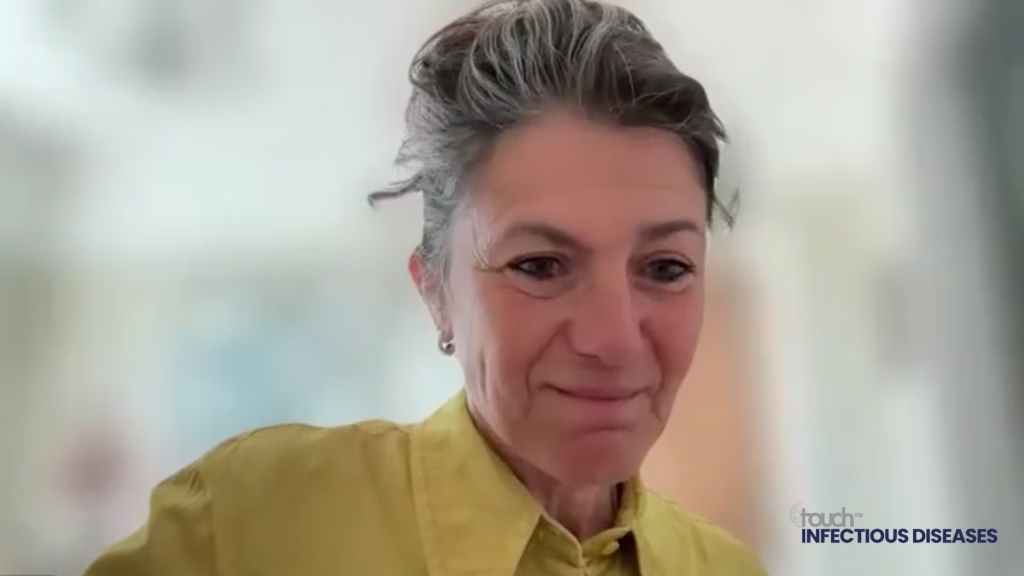Long-acting injectable pre-exposure prophylaxis (PrEP) with cabotegravir has recently been approved as a new HIV prevention method. The preventative treatment involves receiving an injection of cabotegravir every two months to prevent HIV infection, rather than taking daily oral medication. The roll-out of this new prevention method is affected by several factors in both clinical practice and policy making. Dr Nyaradzo Mgodi (Zimbabwe University, Zimbabwe) joins touchINFECTIOUS DISEASES to discuss the key challenges that may affect the implementation of PrEP and the most impacted populations. Dr Mgodi also discusses the how data from clinical trials impacted clinical practice and policy making, and the future directions in the rollout of long-acting injectable cabotegravir for the prevention of HIV.
The presentation, ‘From Efficacy to Effectiveness: Catalyzing Rollout of Long Acting PrEP‘, was presented at the Conference on Retroviruses and Opportunistic Infections (CROI) 2023, 19–22 February 2023.
Watch more in this interview series:
Questions:
- What are the key challenges that may affect the implementation of pre-exposure prophylaxis (PrEP), and which populations does this affect most? (0:40)
- How has data from clinical trials impacted clinical practice and policy making? (4:21)
- What do you consider the future directions in the rollout of long-acting injectable cabotegravir? (6:08)
- What are your take-home messages? (8:41)
Disclosures: Nyaradzo Mgodi has nothing to disclose in relation to this video interview.
Support: Interview and filming supported by Touch Medical Media Ltd. Interview conducted by Katey Gabrysch.
Filmed as a highlight of CROI 2023
Transcript
My name is Dr Nyaradzo Mgodi from the University of Zimbabwe Clinical Trials Research Centre. We are housed within the Faculty of Medicine and Health Sciences at the University of Zimbabwe, which is a centre of excellence conducting clinical trials and we contribute the evidence for public health admissions.
What are the key challenges that may affect the implementation of pre-exposure prophylaxis (PrEP), and which populations does this affect most? (0:40)
The barriers and challenges to PReP are multilevel, and they start from the individual level. Firstly, the individual level barriers, then their interpersonal and community level barriers. “The community that I am living in. Is there stigma? Can I get experience in intimate partner violence in the community?” Then, there’s structural policy level barriers to people who need PrEP that they can experience. So the barriers that they could take time to go through each facet in detail. But we must remember that they are multi-level, individual, interpersonal and community level and structural policy level barriers all the way to good governance, and we need to really look into that. So those are some of the barriers that we know, and these are some of the barriers that we experienced or experience as we run oral PrEP. The way to go about it as we roll out the long acting cabotegravir is to really look at what works best for oral PrEP, and what didn’t work? How do we make it better? So that’s a starting point.
There’s a lot in terms of lessons learned from oral PrEP implementation. We learned that we need to use channels and approaches that work in potential users. We might have a beautiful product and a beautiful service delivery model, but if the potential users don’t like it, it won’t work. We also need to look at demand generation, which needs to balance. We need to have the capital accessible, affordable and available to our communities. At the moment, it’s not yet available outside of our open label extension studies or the planned implementation science programs. So even if we create the demand, what use would need to be? Therefore, we need to have CAB-LA as an affordable and available product, that is accessible and available to all populations. And we work on demand generation and the service delivery models should we administer it in a clinic setting? Is outreach to people in the home setting or by friends? Those are some of the issues that we need to look at and look at approaches of service delivery models, and integration into other sexual reproductive health services. Should it be community led? Can we use to help people use HIV self-testing? So those are some of the issues and questions that we need to think about as we look into long acting cabotegravir roll out and of course whatever we do, we need evidence for decision making and we also need resources to allow scaling up of HIV prevention facilities. So those are some of the lessons that we learned from oral PrEP implementation that we are going to have to put into practice.
How has data from clinical trials impacted clinical practice and policy making? (4:21)
Translating research findings, rather, into clinical practice takes time, but already we’ve seen the evidence. So first and foremost, we need evidence from clinical trials, and then we can translate into policy. Then the policy makers will sit with their stakeholders and see how fast and effectively this new policy can be implemented on the ground. So already, as I know this, the spectrum is too wide, and the gap keeps on widening. Therefore, we really need to ensure that whatever we do, we must always have these multidisciplinary stakeholders, such as the clinical trial specialists, the policy makers, and public health physicians, so that there’s as short a time as possible between our findings from research to policy change and implementation.
So, I’m not a policy maker, but what I would urge our policymakers and our public health physicians to do, is to work together so that when we give evidence in terms of our research findings, they are presented to policy makers, advocates and other stakeholders. We should narrow the gap from evidence from clinical trials to public health impact.
What do you consider the future directions in the rollout of long-acting injectable cabotegravir? (6:08)
I’m very optimistic. The future direction and the time to act is now. We need to do as much as we can, to ensure long acting cabotegravir gets to the people who need it most and who would benefit most from it. As an objective researcher I’m happy there’s more choices for populations at risk, such as women in Africa. Long acting cabotagrevir has its own challenges such as diagnostics and potential resistance for example. But the future is bright in that this was the very first proof of concept, which is the very first intervention, so it can only get better with time. They’re going to be at the injectables with less propensity for resistance, with less propensity for injection site reactions, which can be administered over a longer time. I know the future is bright because the evidence that we have now from a long acting cabotaegrevier will make us better, and our products will become better, and enable our end users to have more choices. As we work on rolling out cabotegravir long acting cabotegravir, we are also working on other modalities. So that the next generation of injectables such as lenacapivir. We are also looking at other modalities, our multipurpose intravaginal rings, subdermal implants. We are on the right trajectory, what we just need to do is to remember that time is not on our side.
In the time we started in the interview several young women in sub-Saharan African women will have contracted HIV. Time is not on our side.
The future is bright, but we must continue to move with speed, but paying due diligence to the products that we deliver to women in Africa.
What are your take-home messages? (8:41)
We just to be thankful for the conducive environment that we work with our participants, research communities, our community advisory board members, our ministries/departments of health in the field. This is really a joint effort which is done by so many people, so many disciplines. Our goal is to provide quality health care to at risk populations. So, I am really, and I keep on saying that the future is bright. It is indeed bright. Of course, there will be some glitches, but the end result will be positive.









